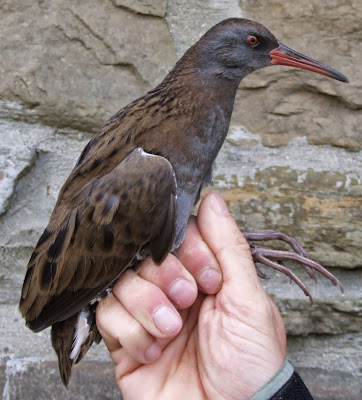As the rains eased I looked out from the house around the garden and the surrounding fields. There was definitely an increase in the number of Blackbirds about and also quite a few Redwing. Then I spotted a movement in the corner of the garden, it was a male Blackcap. Then another and another. Within a few minutes I had counted 5 males and a female. I suspect that there were more but with them flying across the garden and back and disappearing into the undergrowth it was difficult to keep track of how many birds there were.
Word on the local birding grapevine was that there were loads of Blackcaps all over the main island along with good numbers of various thrush species.
I had already received a text message from Andy last night to say that if the rain and winds eased today he would be opening the nets at his place and this morning I got a text from Colin to say that he would be going out too if the rain stopped. About an hour later Colin rang to say that he would be going to the area of woodland above Andy's place.
Colin picked me up on his way through and we arrived at the site around 1pm. As we set the nets up we could hear Robins calling and there were Blackcaps and Chiffchaff flying along the paths in front of us. There were also a number of Blackbirds feeding in the Rosa Rogosa bushes around the perimeter of the site.
We had a steady stream of birds throughout the afternoon with a total of 45 birds caught in total consisting of 42 new birds and 3 retrapped birds which had been ringed by Andy on a previous occasion.
Species caught were (retraps in brackets): Blackcap 21, Blackbird 6 (1), Wren 5, Chiffchaff 2 (1), Goldcrest 2, Mealy Redpoll 2, Robin 2 and Redwing 1.
They say that if you go down to the woods today you may be in for a surprise and we certainly were as the star bird of the afternoon and a new ringing species for me was a female Crossbill.
 | ||||||||||
| Female Crossbill |





















